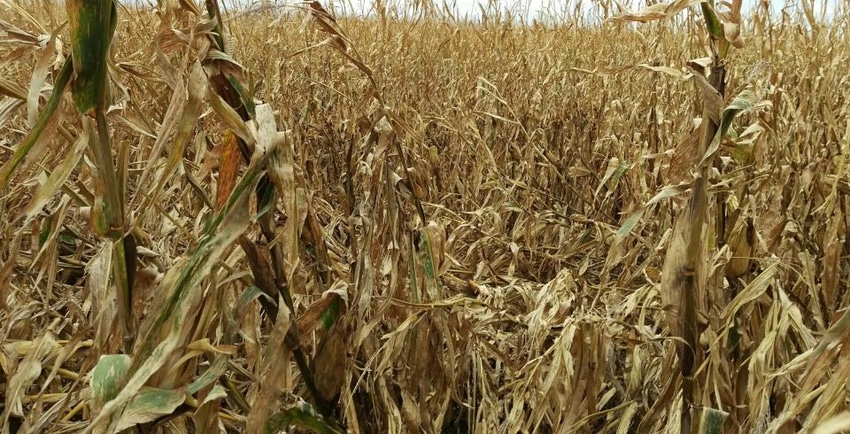October 1, 2018

Source: University of Nebraska-Lincoln
By Jenny Ree, Tom Hoegemeyer and Roger Elmore
With above-normal temperatures in August speeding corn development, corn in eastern and south central Nebraska is reaching maturity earlier than normal and is undergoing rapid drydown in the field. The significant rain in early September increased stalk and ear rots followed by heat and wind contributing to rapid drying. If not harvested in a timely manner, growers may face a situation similar to last year with significant corn ear loss prior to harvest.
Growers are encouraged to scout fields to assess maturity as well as stalk rots and ear rots to prioritize which fields to harvest. One way to test for stalk rots is to "pinch" the internode on the lower portion of the plant for 20 plants (see video). Take a percent of how many easily crush and do this throughout the field to give an indication of the percent stalk rot in the field.
Particularly in drought- and hail-damaged fields in south central Nebraska, stalk rot and ears coming off plants could be found. Thankfully many growers were aware of the situation there and started harvest on those fields early. Stalk rot can also be found in fields not affected by weather events so it's important to scout those fields as well. In that part of the state, growers have reported they are surprised at moisture being around 20% or below right now even in later season (115+ day) hybrids.
This year field scouting is likely to be a better indicator than planting date when assessing which fields will mature first to determine harvest order.
In eastern Nebraska, multiple planting dates are maturing and drying down within a relatively compressed window rather than over an extended period, likely from the extended period of above-normal heat. The concern is that farmers understand the degree of potential harvest loss, stalk deterioration, and potential for another harvest disaster. The recommendation would be to scout and consider taking fields most prone to stalk rot at a higher moisture.
Based on accumulated GDD reported in CropWatch, corn has reach maturity at a number of sites. For example at West Point, corn planted from April 22 through May 27 has accumulated more than 2600 GDD. At Harvard, with a 2700-GDD corn hybrid, planting dates from April 22 to May 20 have reached maturity and the May 27 date likely will this weekend.
Originally posted by the University of Nebraska-Lincoln.
You May Also Like




